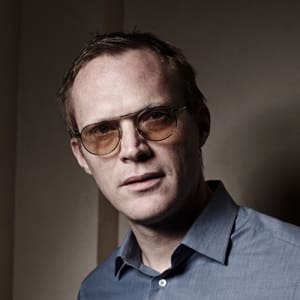
John Bardeen
John Bardeen was co-winner of the Nobel Prize for Physics in 1956 for inventing the transistor and in 1972 for the theory of superconductivity.
Synopsis
John Bardeen shared the 1956 Nobel Prize for Physics with William B. Shockley and Walter H. Brattain for their joint invention of the transistor. In 1972, with Leon N. Cooper and John R. Schrieffer, Bardeen was awarded the Nobel Prize for Physics again, this time for the first successful explanation of superconductivity. Focusing on such areas as electrical conduction in semiconductors and metals, and surface properties of semiconductors, Bardeen was elected to the National Academy of Sciences in 1954.
Early Years
John Bardeen was born in Madison, Wisconsin, on May 23, 1908, the son of Dr. Charles R. Bardeen, the dean of the University of Wisconsin medical school. His intelligence apparent at an early age, Bardeen's parents had him skip from third grade right into junior high. He enrolled at the University of Wisconsin when he was 15 and majored in engineering, later getting his master's in engineering at UW as well.
When Bardeen emerged from UW with his advanced degree, jobs were scarce, as the Depression was in full swing, and he ended up accepting a position with Gulf Oil as a geophysicist. After three years, Bardeen realized that his interests lay elsewhere and he went back to school, this time to Princeton for his Ph.D. in mathematical physics.
At Princeton, Bardeen began his serious studies of metals under Professor E.P. Wigner, using new theories of quantum mechanics to help further understanding of semiconductors. He finished his dissertation in 1935 and was offered a junior fellow position at Harvard, where he spent the next three years. During his stint at Harvard, Bardeen married Jane Maxwell. The couple would go on to have three children.
The Nobel Prizes
In 1945, after World War II came to an end, Bardeen took a position with Bell Telephone Laboratories, where he engaged in further research on semiconductors, specifically on how they conduct electrons. Two years later, Bardeen, William Shockley and Walter Brattain unveiled the transistor to the world, kick-starting a revolution in electronics.
Besides replacing the vacuum tube, which was bulky and much larger, the transistor allowed for the miniaturizing of components needed for the eventual evolution of computers. The invention would lead to Bardeen and his fellow researchers winning the Nobel Prize for Physics in 1956.
Meanwhile, Bardeen had returned to his earlier research on superconductivity, research that eventually explained the disappearance of electrical resistance when materials reach temperatures close to absolute zero. His work with L.N. Cooper and J.R. Schrieffer resulted in the BCS theory of superconductivity (named for the trio's initials), which became the foundational theory for all later work in superconductivity. It also led to Bardeen's second Nobel Prize for Physics, which he shared with Cooper and Schrieffer.
Legacy
Nobel prizes aside, John Bardeen was one of the most decorated and influential scientists of his time. He was a fellow of the American Physical Society and a member of the President's Science Advisory Committee. He was elected to the National Academy of Sciences in 1954 and was awarded the Buckley Prize of the American Physical Society in 1955 and the Fritz London Award for work in low-temperature physics in 1962.




